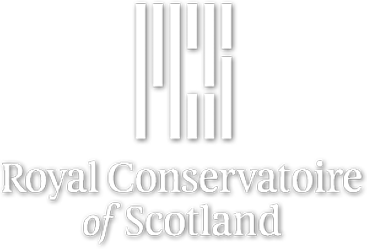From Historical Collections to Metadata: A case study in Scottish Musical Inheritance
Research output: Contributions to journals › Article
Contributors
About
The contemporary librarian is more than ever before a conduit for making historical material available to scholars and performers alike. The challenge in today’s world is not only to augment the crucial early manuscripts and publications with appropriate electronic versions, but to provide added value by enriching them with contextual and interpretative information.
The 3-year AHRC-funded project, Bass Culture in Scottish Musical Traditions, seeks to address this set of issues in Scotland’s own music, specifically for bagpipe and fiddle. The paper provides an excellent opportunity to establish consensus about the metadata; that is, to provide metadata in a form which meets the needs of the widest potential community of users.
The project involves the Universities of Glasgow and Cambridge and the Royal Conservatoire of Scotland. In Glasgow, we are examining over 200 printed fiddle tune-books from the eighteenth and early nineteenth centuries, whilst in Cambridge a doctoral student is researching piping practice and the use of harmonic grounds between 1670-1760. By examining the bass cultures represented in historical sources of Scottish fiddle and bagpipe music, we challenge the assumption that British and European folk musics are based primarily on melody.
The project will provide a substantial web resource of sources and their interpretation, and will engage with musicians working in a number of traditions to develop historically-informed practices. The aim is to enable musicians to have an understanding of the structures that underpin Scottish fiddle and pipe music, enriching the traditions with a deeper, more widespread appreciation of the diversity of their roots.
The metadata requirements of the two repertoires have similarities and divergences; for example, pipers have been frustrated by existing online facsimiles due to the difficulty of finding items by tonality/modality, melody, structure, and genre, and both repertoires feature material varying in its oral and literate transmission, with a tune having no authoritative standard text. Flexibility is needed to apply suitable metadata across both bagpipe and fiddle music, taking into account horizontal and vertical (harmonic and melodic) categories, and structural qualities such as asymmetry. Compatibility with pre-existing approaches is also a prerequisite; delegates will be familiar with existing online and print indices to codify and identify similar tunes.
The 3-year AHRC-funded project, Bass Culture in Scottish Musical Traditions, seeks to address this set of issues in Scotland’s own music, specifically for bagpipe and fiddle. The paper provides an excellent opportunity to establish consensus about the metadata; that is, to provide metadata in a form which meets the needs of the widest potential community of users.
The project involves the Universities of Glasgow and Cambridge and the Royal Conservatoire of Scotland. In Glasgow, we are examining over 200 printed fiddle tune-books from the eighteenth and early nineteenth centuries, whilst in Cambridge a doctoral student is researching piping practice and the use of harmonic grounds between 1670-1760. By examining the bass cultures represented in historical sources of Scottish fiddle and bagpipe music, we challenge the assumption that British and European folk musics are based primarily on melody.
The project will provide a substantial web resource of sources and their interpretation, and will engage with musicians working in a number of traditions to develop historically-informed practices. The aim is to enable musicians to have an understanding of the structures that underpin Scottish fiddle and pipe music, enriching the traditions with a deeper, more widespread appreciation of the diversity of their roots.
The metadata requirements of the two repertoires have similarities and divergences; for example, pipers have been frustrated by existing online facsimiles due to the difficulty of finding items by tonality/modality, melody, structure, and genre, and both repertoires feature material varying in its oral and literate transmission, with a tune having no authoritative standard text. Flexibility is needed to apply suitable metadata across both bagpipe and fiddle music, taking into account horizontal and vertical (harmonic and melodic) categories, and structural qualities such as asymmetry. Compatibility with pre-existing approaches is also a prerequisite; delegates will be familiar with existing online and print indices to codify and identify similar tunes.
Details
| Original language | English |
|---|---|
| Pages (from-to) | 16-22 |
| Number of pages | 7 |
| Journal | Brio |
| Volume | 51 |
| Issue number | 2 |
| Publication status | Published or Performed - 2014 |
Author keywords
Keywords
- Scottish, Fiddle music, Database
